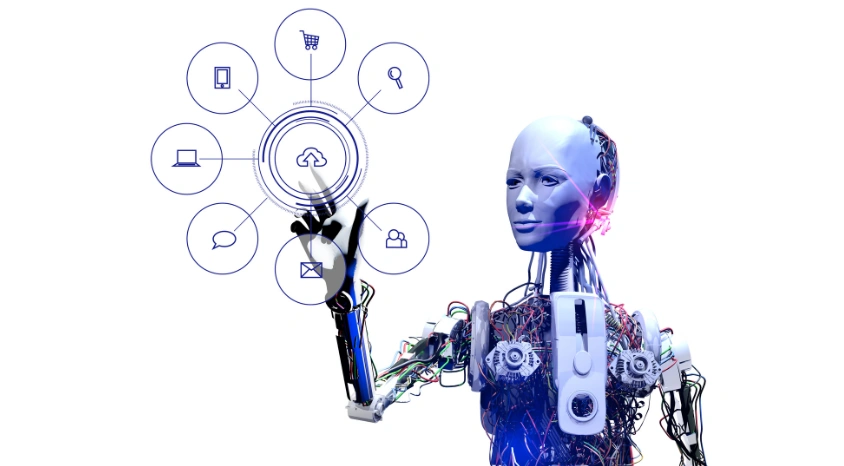In the fast-paced retail industry, efficient operations are crucial for success. Transitioning from manual management to Retail AI 360 can revolutionise your business. This transformation optimises processes, enhances customer experience, and drives sales growth. Let’s explore how Retail AI 360 can streamline retail operations, making them more efficient and effective.
The Limitations of Manual Management
Manual management in retail involves labor-intensive processes prone to errors and inefficiencies. Firstly, tracking inventory manually is time-consuming and often inaccurate. Additionally, manual pricing updates can lead to discrepancies and lost revenue. Furthermore, relying on human judgment for product placement may not always maximise sales potential. Consequently, these limitations hinder overall productivity and profitability.
Introducing Retail AI 360
Integrating advanced technologies to automate and optimise various retail operations reaps many benefits. This system uses artificial intelligence and machine learning to enhance decision-making and operational efficiency. By leveraging data insights, Retail AI 360 provides real-time solutions for inventory management, pricing strategies, and product placement. Transitioning to this technology-driven approach offers numerous benefits for retailers.
Optimising Manual Inventory Management to Retail AI 360
Effective inventory management is essential for meeting customer demand and reducing costs. Retail AI 360 uses real-time data to monitor inventory levels accurately. Additionally, it predicts demand patterns, helping retailers stock the right products at the right time. This reduces overstock and stockouts, ensuring shelves are always optimally stocked. Consequently, customer satisfaction improves, and sales opportunities increase.
Enhancing Pricing Strategies
Pricing is a critical factor in retail success. Retail AI 360 analyses market trends, competitor pricing, and consumer behavior to develop dynamic pricing strategies. By adjusting prices in real-time, retailers can maximise profits and remain competitive. This approach ensures that pricing aligns with demand and market conditions, driving revenue growth and improving profitability.
Improving Product Placement
Product placement significantly impacts sales and customer experience. Retail AI 360 uses data analysis to determine optimal product placement on shelves. By considering factors such as sales history, product popularity, and customer preferences, the system strategically positions products to boost visibility and sales. This intelligent placement enhances the shopping experience and encourages higher purchase rates.
Reducing Operational Costs
An automated system reduces operational costs significantly. Automation streamlines labor-intensive tasks, reducing the need for extensive staff involvement. Accurate inventory management minimises waste and markdowns, further cutting costs. By optimising operations, retailers can allocate resources more efficiently and focus on strategic growth initiatives.
Enhancing Customer Experience
A seamless customer experience is vital for retaining and attracting shoppers. Retail AI 360 enhances this experience by ensuring product availability and accurate pricing. Additionally, personalised marketing and product recommendations improve customer satisfaction. By leveraging data insights, retailers can tailor their offerings to meet customer preferences, fostering loyalty and repeat business.
Leveraging Data Insights
Data is a valuable asset in the retail industry. Retail AI 360 collects and analyses vast amounts of data to provide actionable insights. These insights inform decision-making across various aspects of retail operations, from inventory management to marketing strategies. By understanding consumer behavior and market trends, retailers can make informed decisions that drive growth and profitability.
Real-Time Analytics
One of the standout features of Retail AI 360 is its real-time analytics capability. This allows retailers to monitor and respond to changes instantaneously. For example, if a product is selling faster than anticipated, the system can prompt reordering to prevent stockouts. Real-time data ensures that retailers can adapt quickly to market demands and opportunities, maintaining a competitive edge.
Integrating with Existing Systems
Retail AI 360 is designed to integrate seamlessly with existing retail systems. This ensures a smooth transition and minimal disruption to operations. Additionally, the system’s flexibility allows it to adapt to various retail environments and requirements. This integration enhances overall efficiency and enables retailers to leverage their existing infrastructure while adopting advanced technology.
Training and Support
Transitioning requires adequate training and support for staff. Retailers should invest in comprehensive training programs to ensure employees are proficient in using the new system. Additionally, ongoing support from the technology provider is essential for addressing any issues and maximising the system’s benefits. Proper training and support ensure a successful transition and long-term success.
Case Studies: Successful Implementations
Several retailers have successfully implemented Retail AI 360, experiencing significant improvements in operations and profitability. For instance, a major supermarket chain reported a 20% increase in sales due to optimised inventory management and product placement. Similarly, a fashion retailer saw a 15% reduction in operational costs through automated processes. These case studies highlight the tangible benefits of adopting Retail AI 360.
Overcoming Challenges From Manual Management to Retail AI 360
Transitioning from Manual Management to Retail AI 360 may present challenges, such as initial costs and resistance to change. However, the long-term benefits outweigh these obstacles. Retailers should focus on the strategic advantages and ROI that the system offers. Additionally, addressing concerns and providing adequate training can mitigate resistance and ensure a smooth transition.
Future Trends in Retail AI
The future of retail is increasingly data-driven and technology-focused. Retail AI 360 represents a significant step in this direction. As AI and machine learning technologies continue to evolve, retailers can expect even more advanced solutions for optimising operations. Future trends may include enhanced predictive analytics, personalised customer experiences, and further automation of retail processes.
In conclusion, converting from Manual to Retail AI 360 offers a transformative approach to retail operations & automated efficiency. By optimising inventory management, enhancing pricing strategies, and improving product placement, retailers can drive sales growth and profitability. Additionally, the system’s real-time analytics and data insights empower retailers to make informed decisions and stay competitive. Embracing Retail AI 360 is essential for retailers looking to thrive in the modern market landscape. The transition may present challenges, but the long-term benefits make it a worthwhile investment. Retailers that adopt this innovative technology will be well-positioned for success in an increasingly competitive industry.



